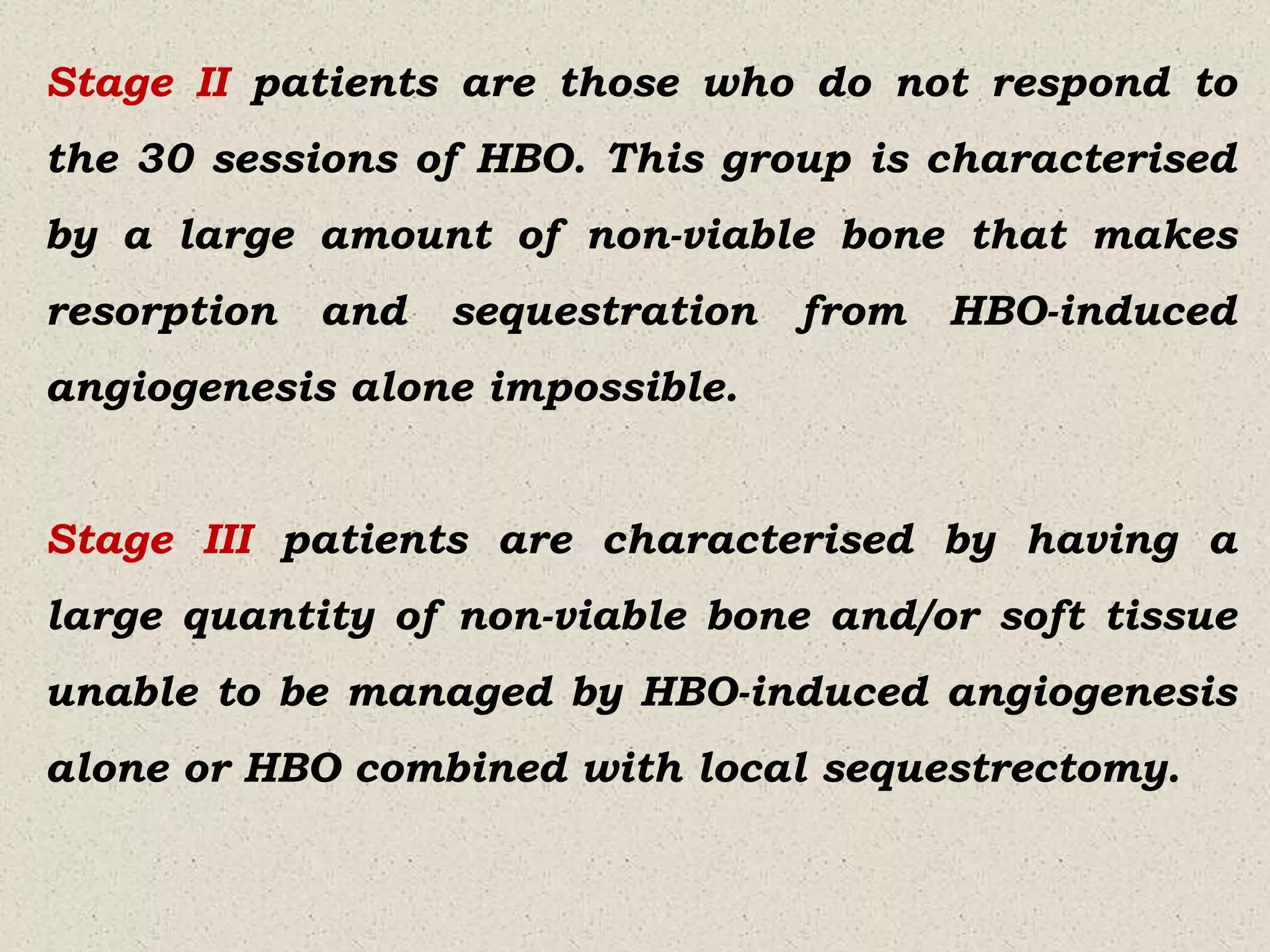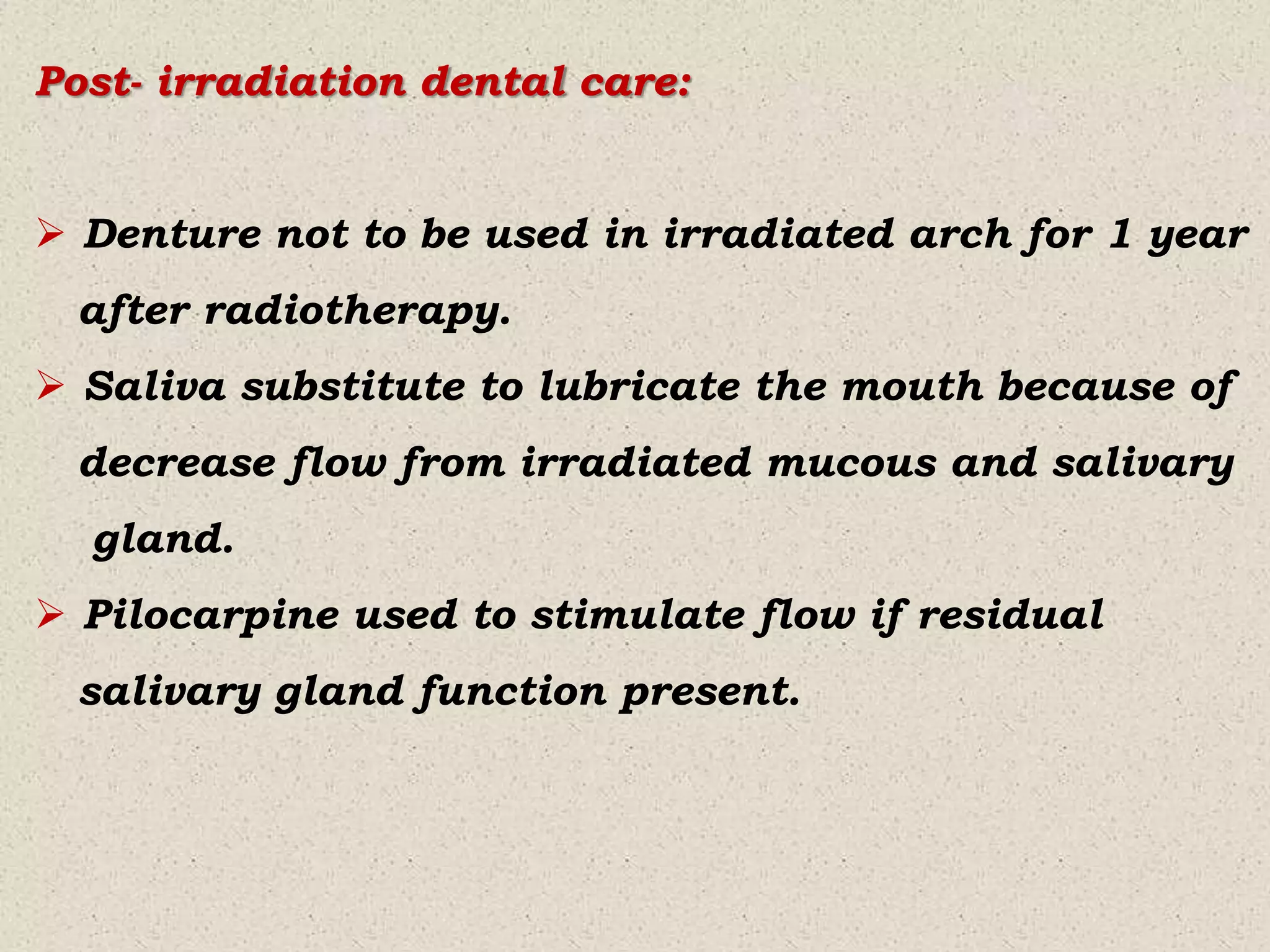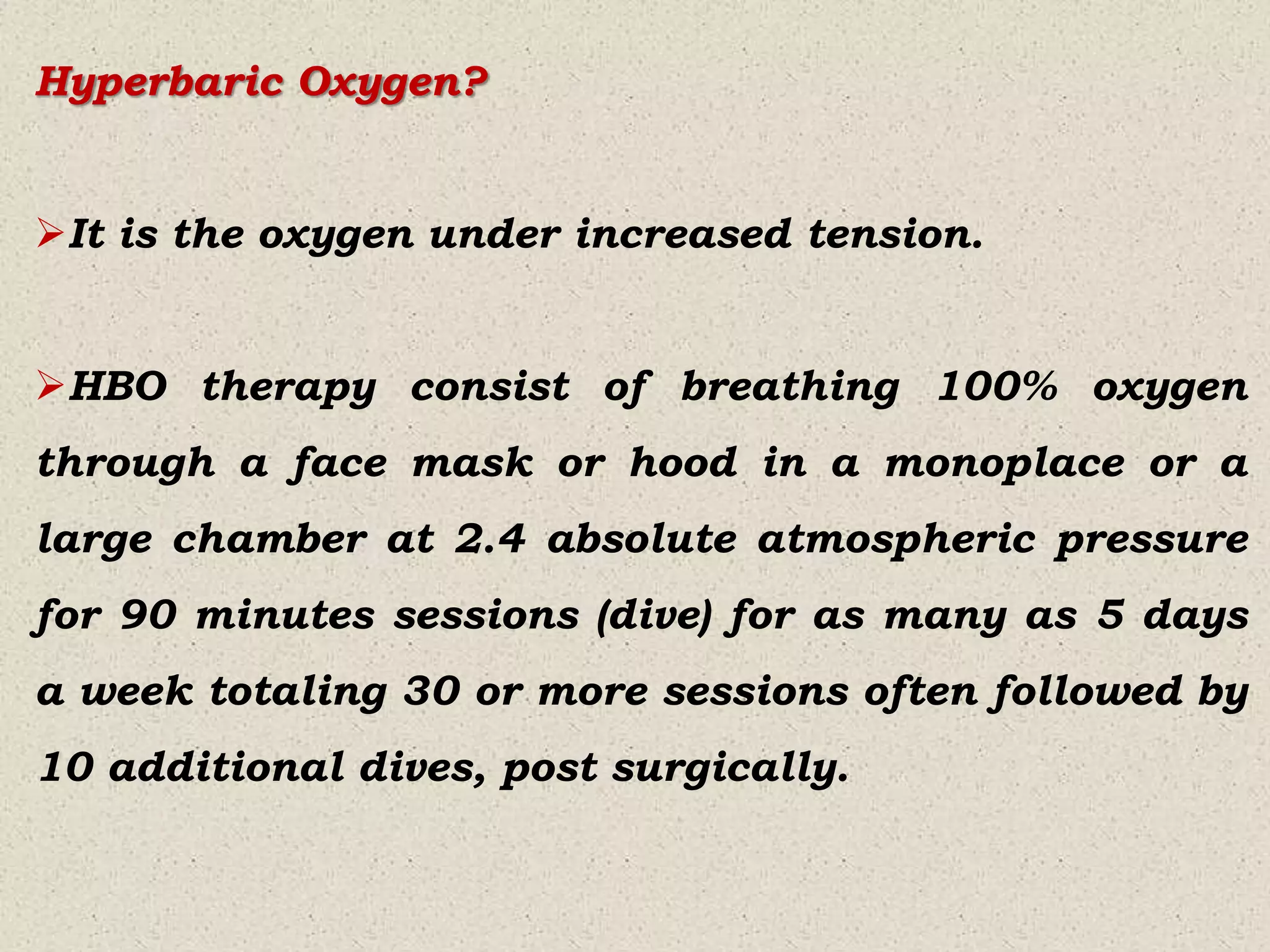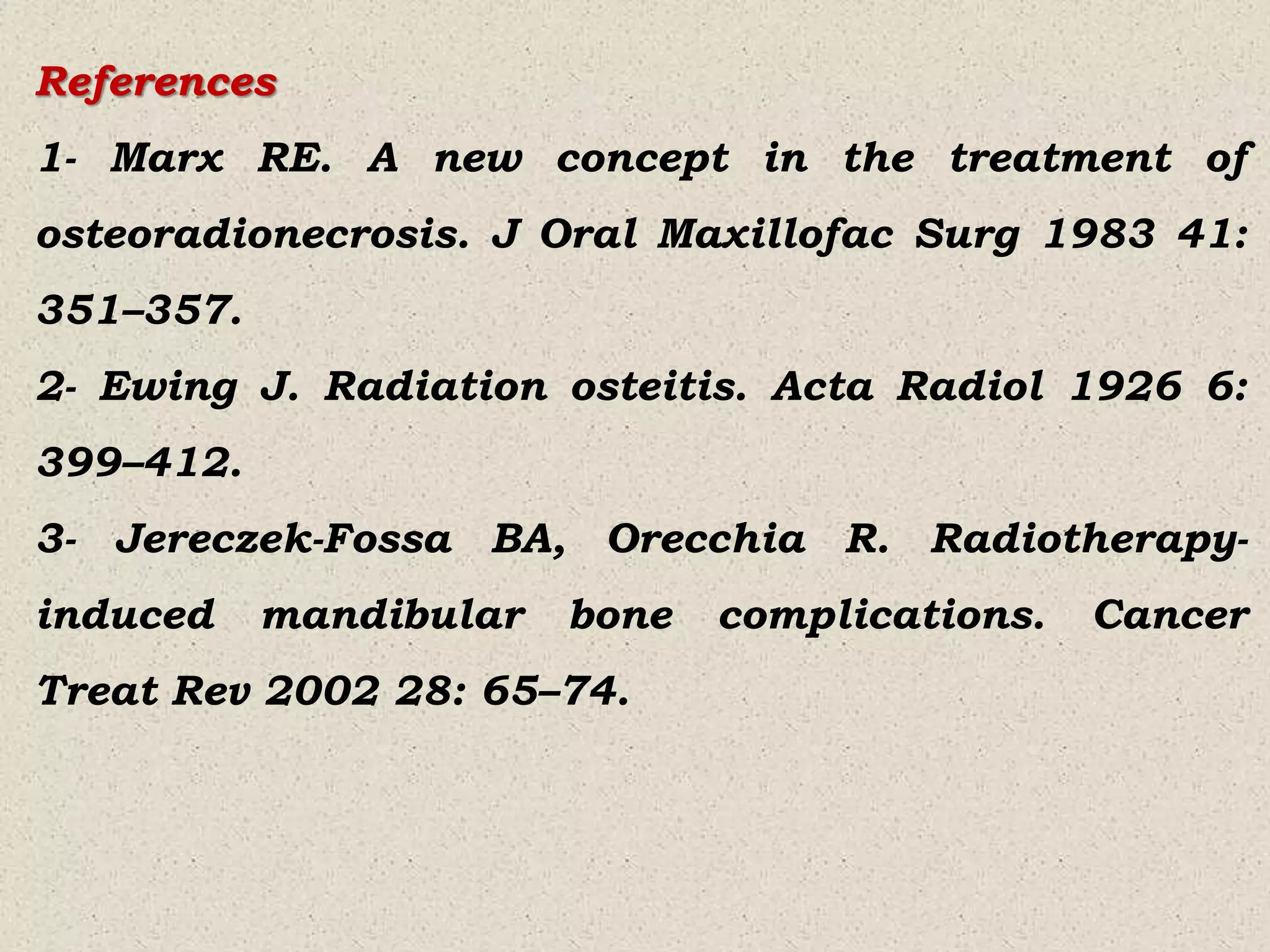The document discusses osteoradionecrosis (ORN), including its definitions, classifications, clinical features, and management strategies. Various classifications such as Notani, Epstein, and Marx are introduced to categorize ORN based on severity and symptoms. The text emphasizes the importance of pre- and post-irradiation dental care, as well as the role of hyperbaric oxygen therapy in treatment.











































